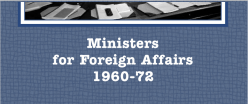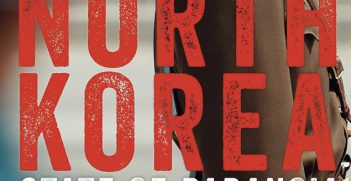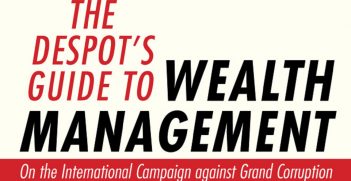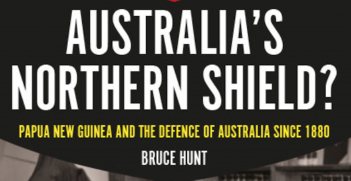Ministers for Foreign Affairs: 1960-1972

A question to tax the most devoted Australian foreign affairs tragic: Name the four Liberal foreign affairs ministers who served in the four years to 1972?
Four in four years speaks of unsettled times. Indeed, over the last seven years Australia has had five foreign ministers. So when we’re chewing through foreign ministers lots of other things are bumpy in Canberra.
The forgotten/forgettable four from 1969-72 were: Gordon Freeth, William McMahon, Leslie Bury and Nigel Bowen. They are the final elements in this account of Australian Foreign Ministers from 1960-72, the second book in the series produced by the AIIA (the first book on Richard Casey was reviewed earlier this month). Both books can be downloaded for free here: http://20.185.176.227?s=Australian+Ministers+for+Foreign+Affairs+Series.
The 12 years surveyed had seven Liberal foreign ministers; in the way of politics, a few players loom large, some scamper by as mice. It starts with the lofty heights of Robert Menzies, the Prime Minister also holding the Foreign Affairs job from February, 1960 to December, 1961.
Another significant player followed when the near-death experience of the 1961 election caused Menzies to hand the Foreign Minister job to Garfield Barwick, Minister from December, 1961 to April, 1964. The great counterfactual is whether Barwick would have had the strength to go with his evident smarts to keep Australia out of Vietnam. But like Percy Spender a decade before, Barwick was a sharp Sydney lawyer who could best serve Menzies’ leadership dominance by being promoted out of politics.
Then came that peak shrouded in mist, Paul Hasluck, Minister from April 1964 to February, 1969. Hasluck was so formal in dealing with his department the relationship became sterile, and policy suffered. Was this merely the Hasluck personality, a reaction to his experience as a young diplomat of the capricious ways of Evatt, or just another sign of Menzies’ command? All these points get a workout.
The seven men – titled as External Affairs Minister or later Foreign Minister– served under four Liberal prime ministers. Getting them together in a coherent and readable work of 250 pages is a notable accomplishment. The AIIA formula can work for one minister, as with Casey, or for seven. The recipe calls for the joining of analysis with anecdote, bringing together the thoughts of academic experts and ex-diplomats who were in the trenches at the time.
The diplomats do a great job of connecting the dots and illuminating personality. See Garry Woodard’s observation that the only thing to unite Casey, Barwick and Hasluck was ‘a shared loathing of Billy McMahon.’
The experts paint the big picture. Geoffrey Bolton elegantly weaves a policy overview of the dozen years, dismissing the forgettable four – Freeth, McMahon, Bury and Bowen – with Disraeli’s phrase about ‘transient and embarrassed phantoms,’ Peter Edwards discusses Confrontation and Vietnam while James Cotton deals with policy towards China and Japan.
Two great fixations or rigidities run through the period: Australia’s commitment to the Vietnam War and the firm refusal to recognise China. As the Nixon White House pushed towards the Vietnam exit and secretly reached out to China, it never bothered with the needs of its close ally. Consultation on Vietnam would have been nice, but Canberra wasn’t even thrown scraps of advance information.
The Vietnam frustration was part of the atmosphere that saw Bury lose the job of foreign minister. After the McMahon government was blindsided by Kissinger’s visit to Beijing, ‘Bury complained that Australia should not always be dragged along at the chariot wheels of the US. McMahon allowed four days for the resultant backlash to gather and then sacked him.’
Mack Williams gives a vivid example of the problems the secretive White House caused for Australian diplomats and how our Washington embassy coped with being ‘very much out of touch’ with US decisions:
‘My job was to find out what the hell the Americans were doing next. It got to very basic ways of finding out. We’d get word that something was going to happen next week, that there would be an announcement on Vietnamisation. I would contact Winston Lord, who was in Kissinger’s office [Special Assistant to the National Security Advisor 1969-73] and say, “Can we have lunch on Tuesday?” If he said we could, then I knew nothing was coming up because they always released their announcements on Tuesdays. If he said he couldn’t, then that was important information. That was the level of intelligence we were getting at that particular point.’
This is a jewel of a yarn, one of many fine anecdotes sparkling through the book. Finish with a gem about trade relations with Japan that throws forward to the Whitlam government. Phillip Flood is a young diplomat helping brief Gough Whitlam on the proposed NARA treaty. The Japanese linguist has to warn Whitlam of a translation difficulty: ‘The problem with this treaty is that the symbol for NARA is very close to the symbol for bullshit in Japanese.’ Gough Whitlam replies: ‘Comrades, we have a perfect title for the treaty!’
Roll on the proposed third book in the AIIA series on Whitlam and Willesee, 1972-75.
AIIA, Ministers for Foreign Affairs: 1960-1972, edited by Melissa Conley Tyler, John Robbins and Adrian March.
Reviewed by Graeme Dobell, Journalist Fellow at the Australian Strategic Policy Institute and Fellow of the AIIA.





